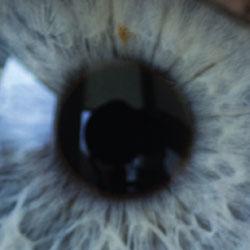
The term ocular surface disease refers to problems that occur on the transparent layer in the front of the eye, or the cornea.
Barnet Dulaney Perkins Eye Center seeks to educate people on their vision and about what conditions they should be aware. We believe in having an in-depth knowledge of all things eye-related, including the surface diseases that can occur. Here are answers to some of the questions you might have about ocular surface diseases.
What Kind of Ocular Surface Diseases Exist?
There are several conditions that can occur. Some start out as mere irritations but can get much worse, leading to vision loss in some cases. Here are a few:
Ocular Surface Disease: Dry Eye
This condition is common and can be chronic. Dry eye occurs when the eye doesn’t produce enough tears or ones with enough of the restorative properties that the cornea needs for clear vision .
Tears do many things to protect the health of the eye. They help to reduce eye infections by washing away foreign matter and keeping the surface clear. Medications affect tear production as do environmental factors that cause more rapid tear evaporation.
Tear production and quality decrease as you get older. If the amount of tears you produce is fine, but one of the three layers of tears (oil, water, or mucus) is not being produced at the optimal level, you will experience dry eye symptoms.
Who is at risk for dry eye?
Adults over age 65 experience dry eye symptoms frequently, however not exclusively. Women can develop them during periods of hormonal change such as pregnancy and menopause. Some diseases have a direct connection to dry eye, such as diabetes and rheumatoid arthritis.
What does it feel like?
Dry eyes feel as if there is something under the eyelid. Eyes can also feel scratchy or gritty. They may burn, vision might be blurry, and your eyes may water excessively.
How can this condition be managed or cured?
A common process for managing dry eyes is to add tears or eye drops. Blocking the tear ducts with collagen plugs that tear normal drain from is common practice. When these are proven to work, more permanent plugs are put in.
Ocular Surface Disease: Blepharitis
Blepharitis is an inflammation of the eyelid, like a style. It is a common condition that can affect both eyelids where the eyelashes grow. There are several causes of Blepharitis and because of that, it can be difficult to diagnose. Contributing factors include scalp and eyebrow dandruff, eyelash mites, allergic reactions to makeup, and clogged oil glands in the eyelids.
Who is at risk for developing this condition?
Adults and children alike from all ethnicities are susceptible.
What does it feel like?
Blepharitis causes swelling and reddening of the eyelids and can feel like there is a knot in the upper lid. Eyes and eyelids can also feel gritty and itchy. The eyes themselves may feel sticky and may, indeed, stick to the lower lids upon waking up in the morning. Eyes may also be more sensitive to light.
How can this condition be managed or cured?
Many people try home remedies first before seeing the doctor and it is true that warm compresses and washing the eyelids often helps. Doctors can prescribe antibiotics to fight the infection and control inflammation, as well.
Ocular Surface Disease: Sjogren’s Syndrome
This condition is a rare autoimmune disease, which causes either low- or hyper-immune system activity. It is characterized by dry eyes and mouth. This condition can be considered either primary or secondary based upon how the condition starts. It can develop on its own (primary) or as a result of another condition respectively (secondary).
Who is at risk for developing this condition?
While doctors are unsure why some are susceptible and others are not, women are diagnosed with the condition more than men. Sjogren’s Syndrome is most frequently diagnosed in menopausal women. The condition has also been found as a genetic pointer in families that have autoimmune conditions.
What does it feel like?
Sjogren’s Syndrome makes eyes feel as if something is in them or makes them sting or itchy. Mucus also can discharge from the eyes. They can become tired-looking and irritated, and inflammation makes them puffy.
How can this condition be managed or cured?
Adding tears to the eyes through artificial tears is a common treatment for Sjogren’s Syndrome. Wrap around glasses that effectively reduce the amount of external stimulant the eye experiences is also an option.
Ocular Surface Disease: Rosacea
This is a common condition that has a skin irritation component that it’s most closely associated with. Soreness and burning in the eyes is an additional symptom of the larger skin issue. If untreated extreme cases can lead to vision loss.
Who is at risk for developing this condition?
This routinely affects people over the age of 30. The condition is most often found in people with fair skin and who blush easily. It also seems to run in families. Women are most likely to be diagnosed with this condition, however, it is most extreme in men .
What does it feel like?
Rosacea can feel like chronic dry eye with scratching, burning, and irritation. The eyes may also appear bloodshot.
How can this condition be managed or cured?
Thoroughly cleaning the eyelids to remove excess oil as well as artificial tears are two of the most common remedies for the ocular portion of this condition.


